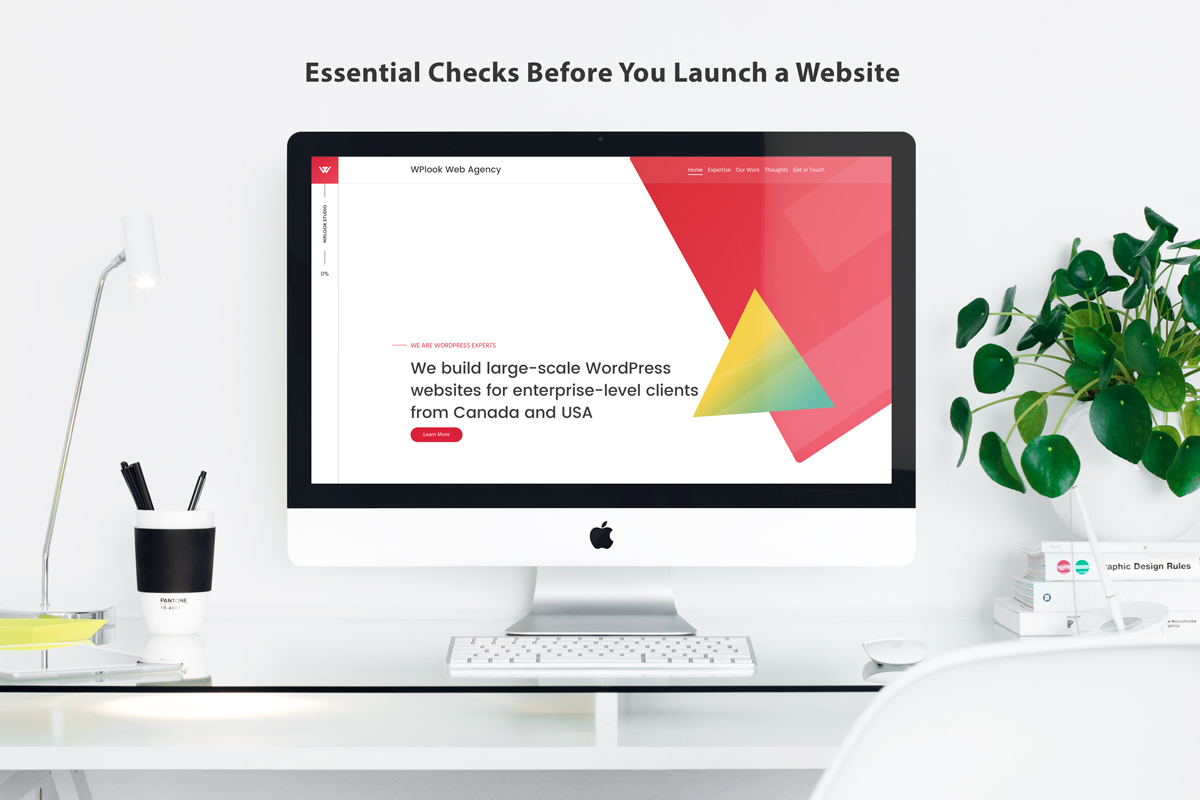It’s very important to have a checklist as you finalize in making your website. Below you can find 10 essential website checks before you go live:

Free Download: Essential Checks Before You Launch a Website
1. Proofread
Ensure you read everything even if you’ve already gone through it sometimes back. Also, get someone close to you to read it. After this, you’ll have picked up some new ideas which you can then adopt and change from the previous. Find the possibility of reducing the number of text in order to be more specific. Also, separate the large text blocks using paragraphs and add clear headings. Finally, don’t forget to use lists to bring ease of scanning by users.
2. Functionality check
Test every aspect thoroughly. For instance, if your website has a contact form, try to fill it and see what exactly comes through. You can also use your friends or family members in testing this to ascertain its functionality. It will be an amazing experience to see how others use your site than assuming how they would use it. The common aspects to be checked here are the contact forms, shopping baskets, search functions and also the login areas.
3. Titles and Metadata
The most vital element for SEO is the page title. This is because it gives the users a hint of what the page is all about. Ensure that it varies on each page and also relates to the page’s content. Keyword tags and Meta descriptions aren’t much vital for SEO, although it’s a wise idea to include them. Ensure you change the description on every page to enable it to relate to that page’s content since Google majorly displays this in its search engine result description.
4. Cross-browser checks
For many people to be able to open your website, it’s a requirement that it’s able to work across all browsers. It shouldn’t necessarily be pixel perfect, but every aspect must work, and all users shouldn’t get any problems in accessing your website. We check the latest 2-3 version for every browser. We work with Foundation Zurb so it’s very simple to write compatible code for all modern browsers.
5. Favicon
A favicon simply brands the window or tab that your site is open in the user’s browser. Also, it’s saved with bookmarks to enable users to easily identify certain pages from your site. Some browsers will recover the favicon whenever it’s saved in the root directory as favicon.ico.
6. Links
Make sure all the site’s URLs are live and function appropriately. Links are as yet the most vital factor in the algorithms of Google and other web search engines. Make sure do not forget to add http:// to links to the external sites. Check to ensure your logo is linked to the homepage. Also, don’t underline any text that isn’t a link to avoid confusing users.
7. Analytics
How can you measure the number of individuals reaching out to your website? Installing analytics tools is important in determining your website performance as well as the success rate of your conversions. Ensure you track the unique daily hits, browser statistics, monthly page views and any other useful data. Some of the analytics tools are Google analytics which is free, Facebook Analytics, Heatmap, Kissmetrics, Mint, Clicky, and StatCounter.
8. Defensive design
One of the popular defensive design element that is overlooked is the 404 page. Whenever an individual requests any page from a website that doesn’t exist, the 404 page is displayed. You need to get the users back on track by simply providing a 404 page which suggests other pages of interest or directs them to the homepage.
9. Back up
You need a backup strategy whenever your website runs off the database. For those who use WordPress, using the VaultPress is of great importance. Backups enable you to restore your website in case something turns out badly.
10. Graceful degradation
Your site must work with JavaScript turned off. You must be adequately prepared because most users have JavaScript turned off due to security reasons. One can turn off JavaScript easily in Firefox. Make sure that you test your forms to ensure they perform some server-side validation checks.
11. Optimize
You’ll need to configure your website for ideal optimal performance. The essential steps to do it are: Optimize Images for the web: Start with high-quality images, Use the right file type: JPEG or PNG, Name the image correctly, Resize images to optimize page speed, Make images same size and style, etc.; Minimize HTTP requests: An HTTP request is made for each one of the elements like images, stylesheets, scripts, Flash, etc, so the more on-page components, the longer it takes for the page to render; Compressing JavaScript and CSS files and so on can all help load your pages more quickly and efficiently, etc.
12. Sitemap XML
Sitemap XML help search engines understand your website’s structure, the pages it contains and allows search engines to index your website. You should have a sitemap strategy: to make sure your sitemaps up to date; submit a sitemap to Google Webmaster tools, submit a sitemap to bing webmaster tools or to other search engines.
13. Check robots.txt
It is important essential to understand the importance of robots.txt file and learn how to check whether you’re using it correctly. The robots.txt file is a file that contains information about which part of the site should be made publicly available. Using robots.txt ensures that the search engine bots index the main content on your website; can prevent duplicate content issue; enable you to disallow directories that you would not want the search engine robots to index.
These are some of the essential website checks that you must see before a website launch in order to ensure that it’s perfect in all aspects. Have I forgotten anything before launching the website? Please let me know in the comments.